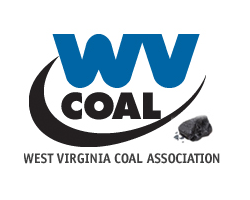
 











|
Signature Sponsor


June 3, 2023 - On May 12, 2023, the West Virgina Coal Association (WVCA) forwarded an analysis and link for EPA’s new Carbon Rule (See below). Earlier today, EPA announced a revised virtual hearing schedule for June 13, 14,& 15 for interested persons to comment on the rule, however, any person electing to make oral comments at these hearings must first register by June 6. Please find a link to register for the hearings and other pertinent information here.
WVCA will follow up with a membership and Friends of Coal email blast Monday to encourage a good turnout at these events and participation in the agency’s rule making activity.
EPA Releases New Carbon Emissions Rule for Existing and New Electric Generating Units
Yesterday, the federal Environmental Protection Agency (EPA) released its new rule to regulate carbon dioxide emissions from existing and new electric generating units (EGUs) under sections 111(b) and 111(d) of the federal Clean Air Act (CAA). The proposed rule contains provisions for existing coal and natural gas units and standards for new natural gas units (EPA assumes that no new coal EGUs will be constructed after the effective date of the rule so the 2015 standards for new coal units developed under Section 111(b) of the CAA remain in place). The proposed rule would also repeal and replace the Affordable Clean Energy (ACE) Rule issued by the Trump Administration in 2019.
Like the recently proposed Effluent Limitation Guidelines for EGUs, the proposed rule contains “off-ramps” and intervals for compliance for both coal and natural gas units. For coal units, the options include to retire by 2032 with no additional controls, operating at a reduced (20%) capacity factor with no additional controls and retire by 2035, co-firing coal units with 40% natural gas and retire by 2040 and the installation of carbon capture and storage (CCS) at a 90% capture rate for EGUs that will operate beyond 2040. Existing and new natural gas units would be subject to similar restrictions.
Our preliminary technical analysis of the proposal’s requirements for coal and natural gas units is provided below.
Compliance with the proposed limits and selection of the various options summarized above would come in the form of plans submitted by individual states to EPA by 2030.
EPA has scheduled two virtual webinars on the proposed rule for June 6 and 7 (registration is available on EPA’s carbon rule landing page at https://www.epa.gov/
The 681-page prepublication version of the rule is available at https://www.epa.gov/system/
Attached to this message is a press release issued yesterday by the Association in response to the proposed rule. We have been in near constant contact with state leaders and our Congressional delegation to express our concerns about the proposal and its devastating impact on the nation’s electric generating fleet and thermal coal production and discussing options for legal and legislative / congressional actions to address the proposal. We will provide further updates and details as our discussions continue.
Please feel free to give us a call if you have any questions or need any further information.
Existing Coal Units • EPA is proposing to establish new emission guidelines for existing fossil fuel-fired steam generating EGUs that reflect the application of CCS and the availability of natural gas co-firing. • EPA is proposing that the BSER for coal-fired steam EGUs that will operate in the long-term (i.e., after December 31, 2039) is the use of carbon capture and storage (CCS) with 90 percent capture of CO2. The associated degree of emission limitation is an 88.4 percent reduction in emission rate (lb CO2/MWh-gross basis). • EPA has determined that CCS satisfies the BSER criteria for these sources because it is adequately demonstrated, achieves significant reductions in GHG emissions, and is highly cost-effective. • Although the EPA considers CCS to be a broadly applicable BSER, the Agency also recognizes that CCS will be most cost-effective for existing steam EGUs that are in a position to recover the capital costs associated with CCS over a sufficiently long period of time. • In response to industry input, and recognizing that the cost-effectiveness of CO2 controls depends on the period of time over which a plant will be operated, EPA is proposing to divide the subcategory for coal-fired units into additional subcategories based on operating horizon (i.e., dates for electing to permanently cease operation) and, for one of those subcategories, load level (i.e., annual capacity factor), with a separate BSER and degree of emission limitation corresponding to each subcategory. For each subcategory, EPA is proposing standards of performance reflecting controls that are cost-effective and achievable for existing plants in that subcategory. o For units that elect to commit to permanently cease operations prior to January 1, 2040, and that are not in other subcategories, EPA is proposing that the BSER is co-firing 40 percent natural gas on a heat input basis. The associated degree of emission limitation is a 16 percent reduction in emission rate (lb CO2/MWh-gross basis). o For units that elect to commit to permanently cease operations prior to January 1, 2035, and commit to operate with an annual capacity factor limit of 20 percent, EPA is proposing that the BSER is routine methods of operation and maintenance. The associated degree of emission limitation is no increase in emission rate. o For units that elect to commit to permanently cease operations prior to January 1, 2032, EPA is proposing that the BSER is routine methods of operation and maintenance. The associated degree of emission limitation is no increase in emission rate. • EPA is also proposing emission guidelines for natural gas- and oil-fired steam generating units, with additional subcategorization by capacity factor. For each of the proposed subcategories, the BSER is routine methods of operation and maintenance, and the degree of emission limitation is no increase in emission rate.
Standards for New, Reconstructed and Modified Coal Units • The 2015 standards for new coal units, based on CCS, and for reconstructed coal units, based on efficiency, remain in place. • EPA determined not to review the new and reconstructed standards because we anticipate no further new units. • EPA reviewed and is proposing to revise the standards for modified units to be based on the BSER of CCS with 90 percent capture, to ensure consistency for any existing units currently subject to the emission guidelines that may modify and become subject to the NSPS.
New Natural Gas Units The proposal breaks new natural gas units into subcategories with different requirements:
o Phase 1: Affected facilities must meet a first phase standard of performance, based on highly efficient generation, by the date the rule is promulgated or upon initial startup of the facility for units that commence construction after the date of promulgation. o Phases 2 and 3: Affected facilities in the intermediate load and base load subcategories must also meet more stringent phases of the standard of performance at specified compliance deadlines in the future. These compliance deadlines allow time for affected sources to plan for and install controls. § Intermediate load affected facilities must meet a second phase standard based on 30% low-GHG hydrogen (by volume) by 2032. § Base load affected facilities that follow the CCS pathway must meet a second phase standard based on 90% capture of CO2, using CCS, by 2035 § Baseload affected facilities that follow the low-GHG hydrogen pathway must meet a second phase standard based on co-firing 30% low-GHG hydrogen by volume by 2032 and a third phase standard based on co-firing 96% by volume low-GHG hydrogen by 2038.
Existing Natural Gas Units
|
 










|